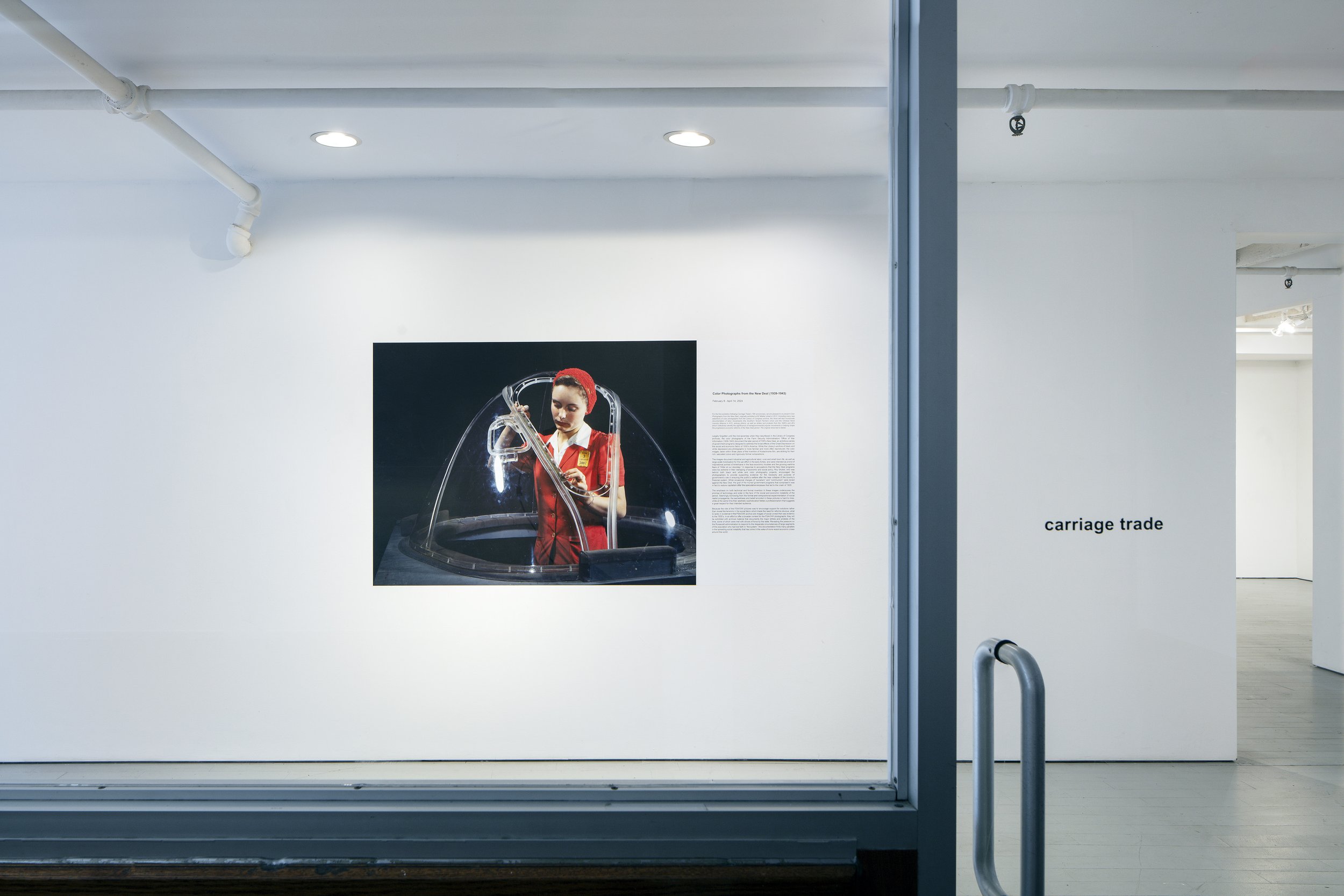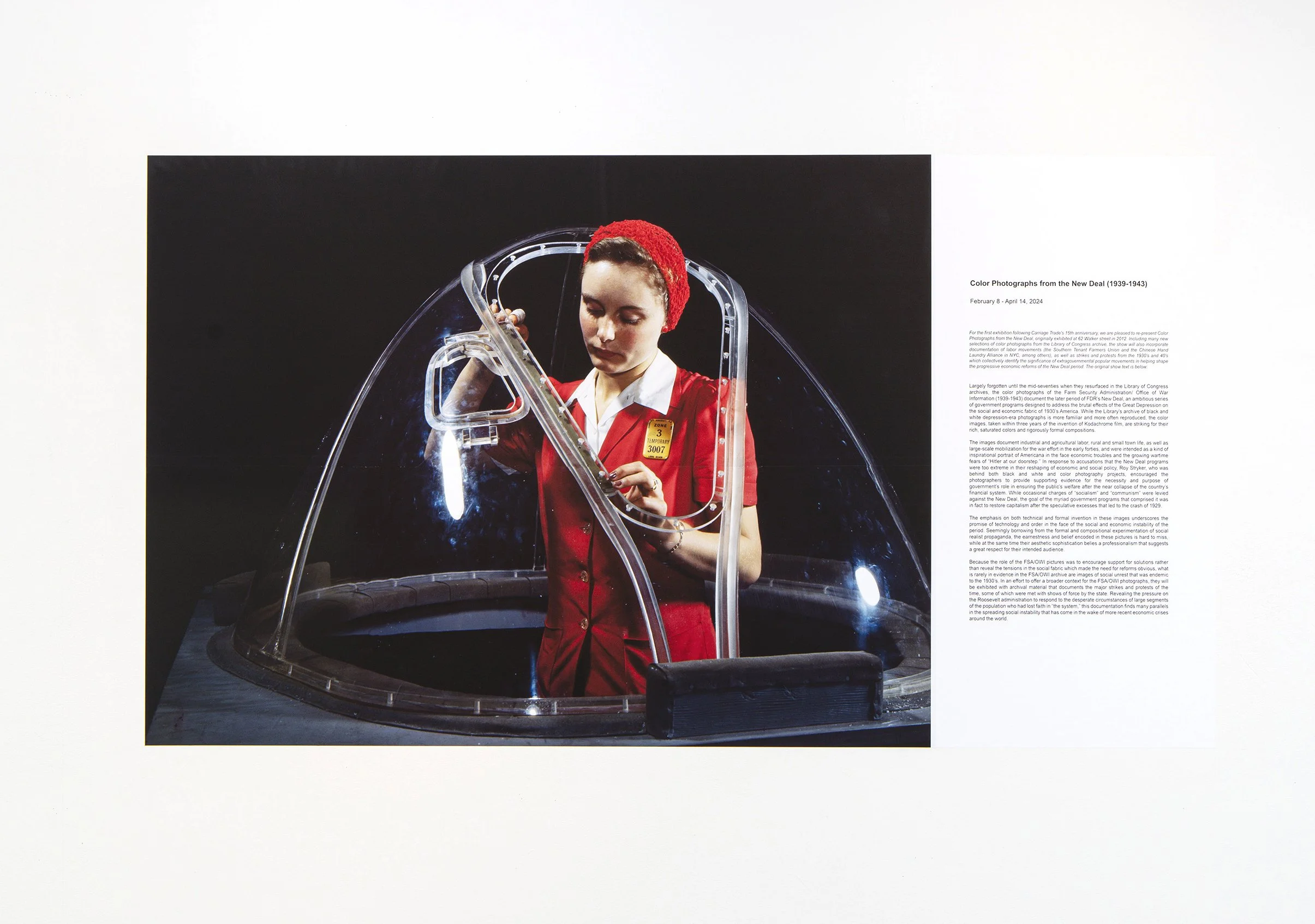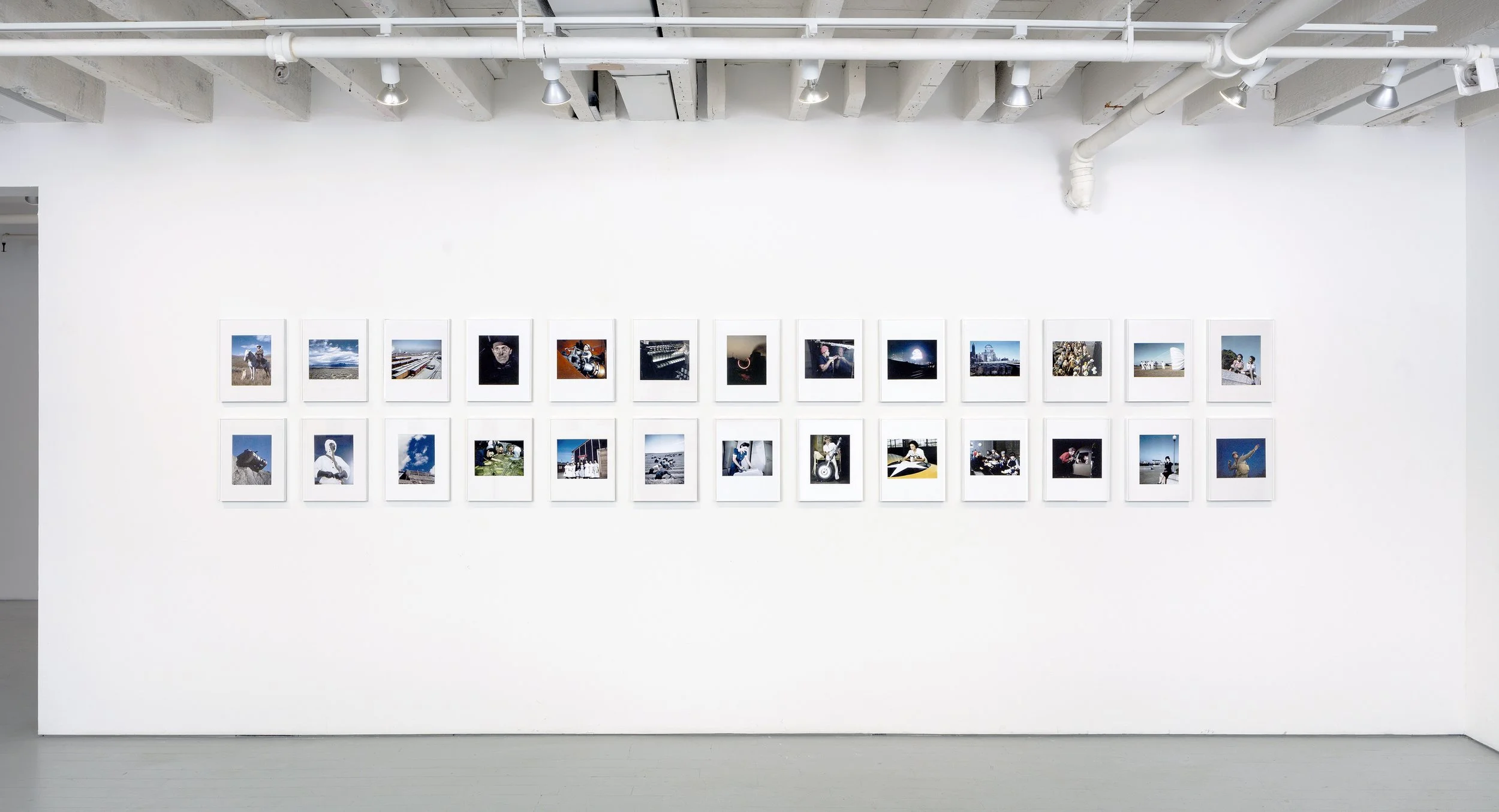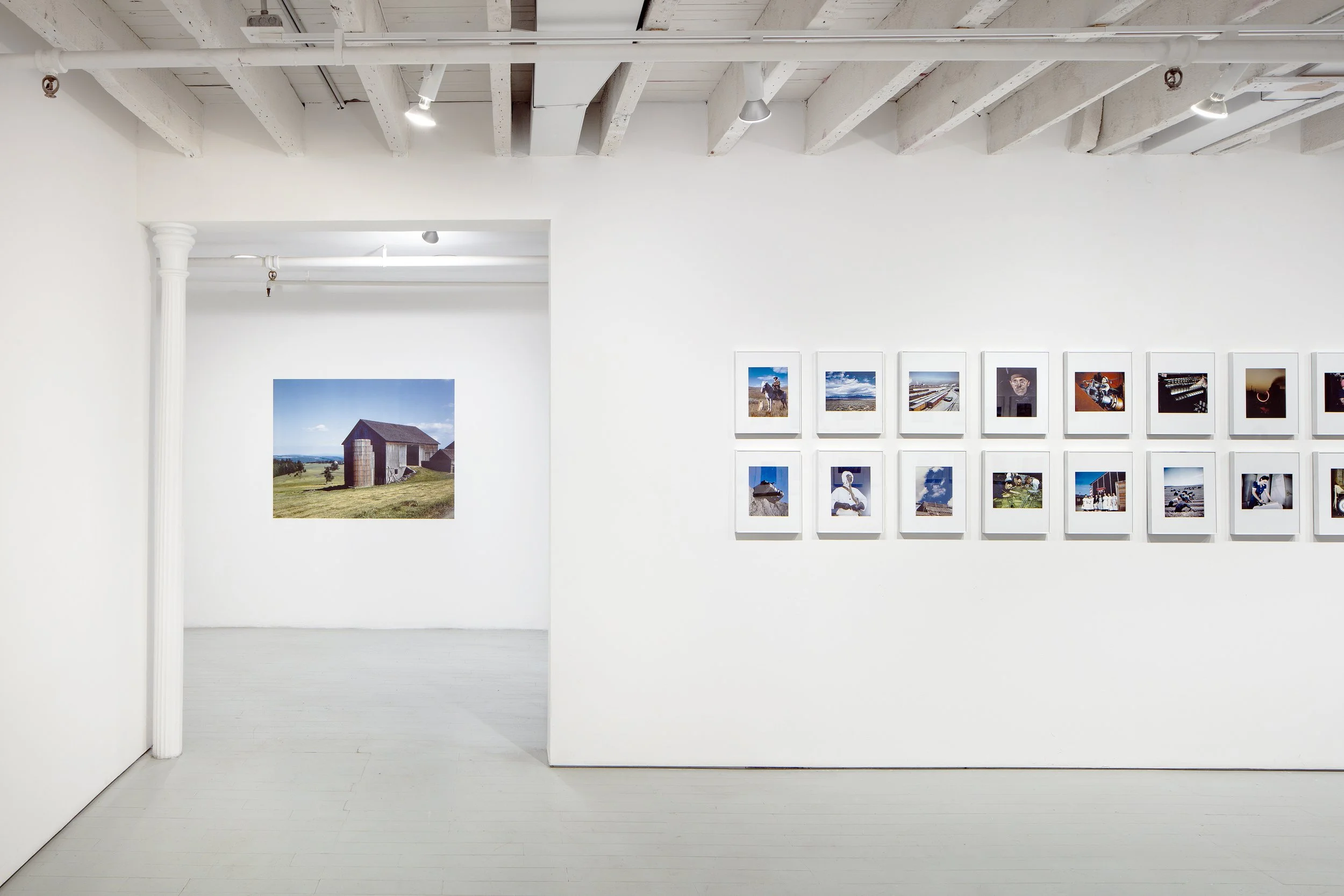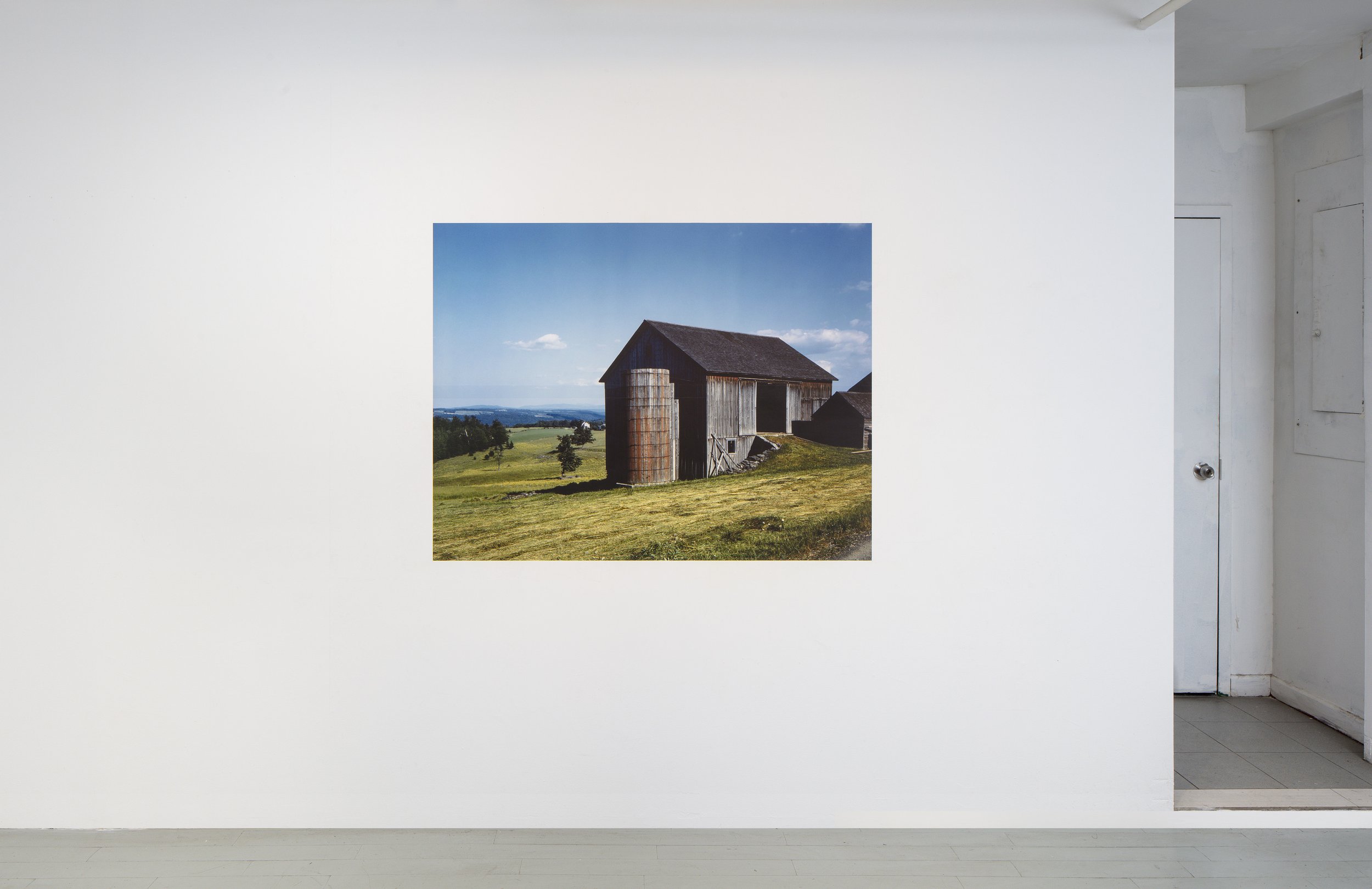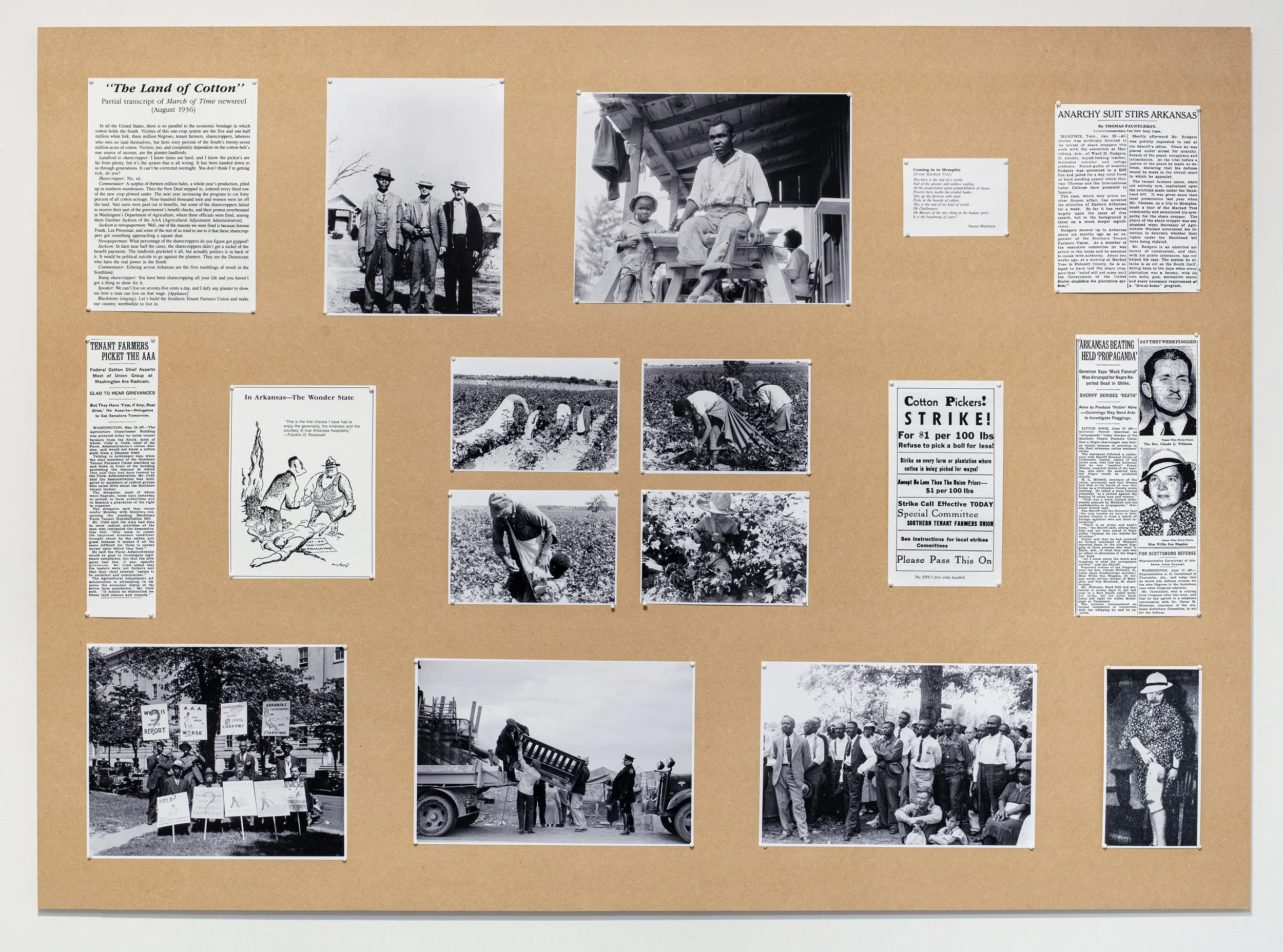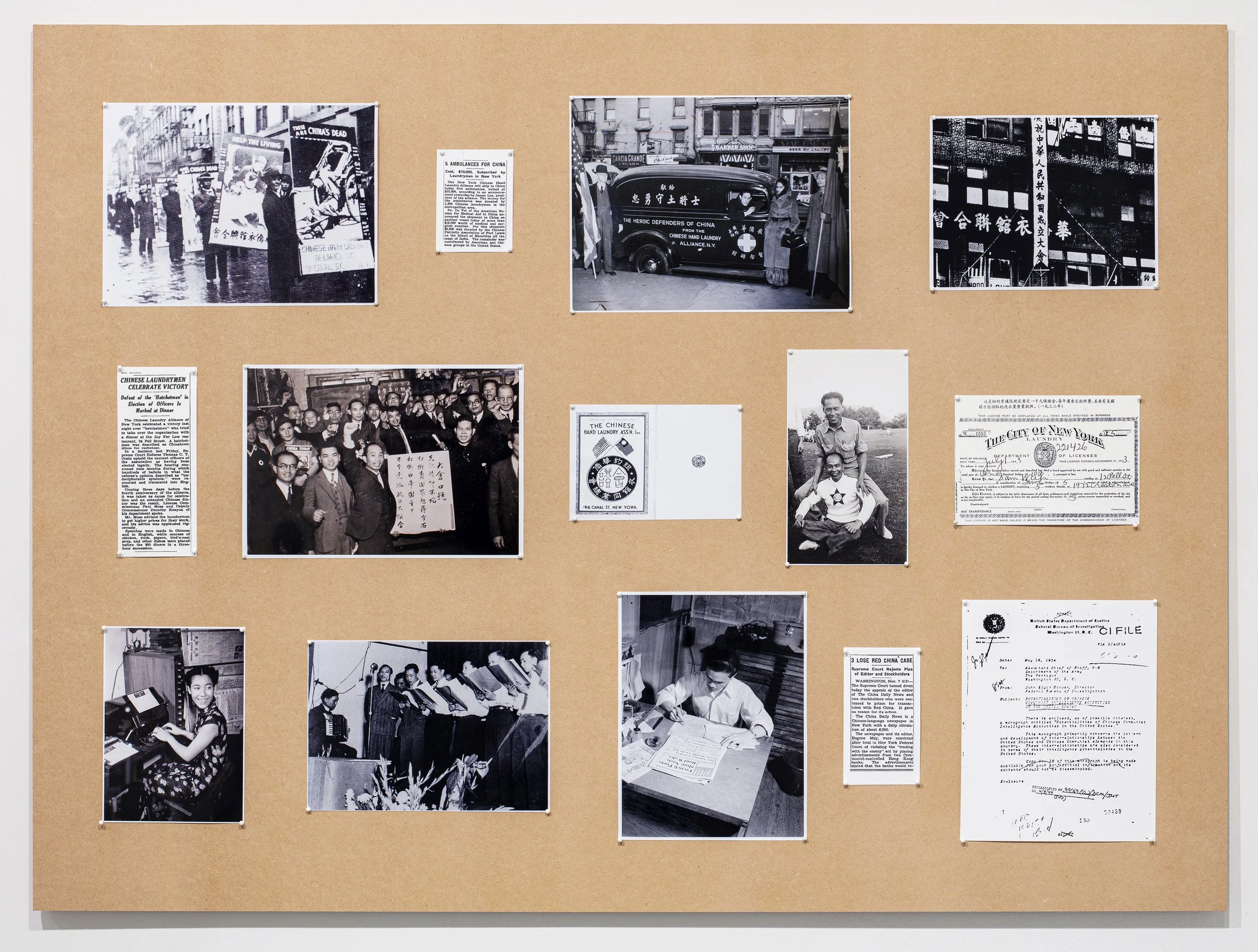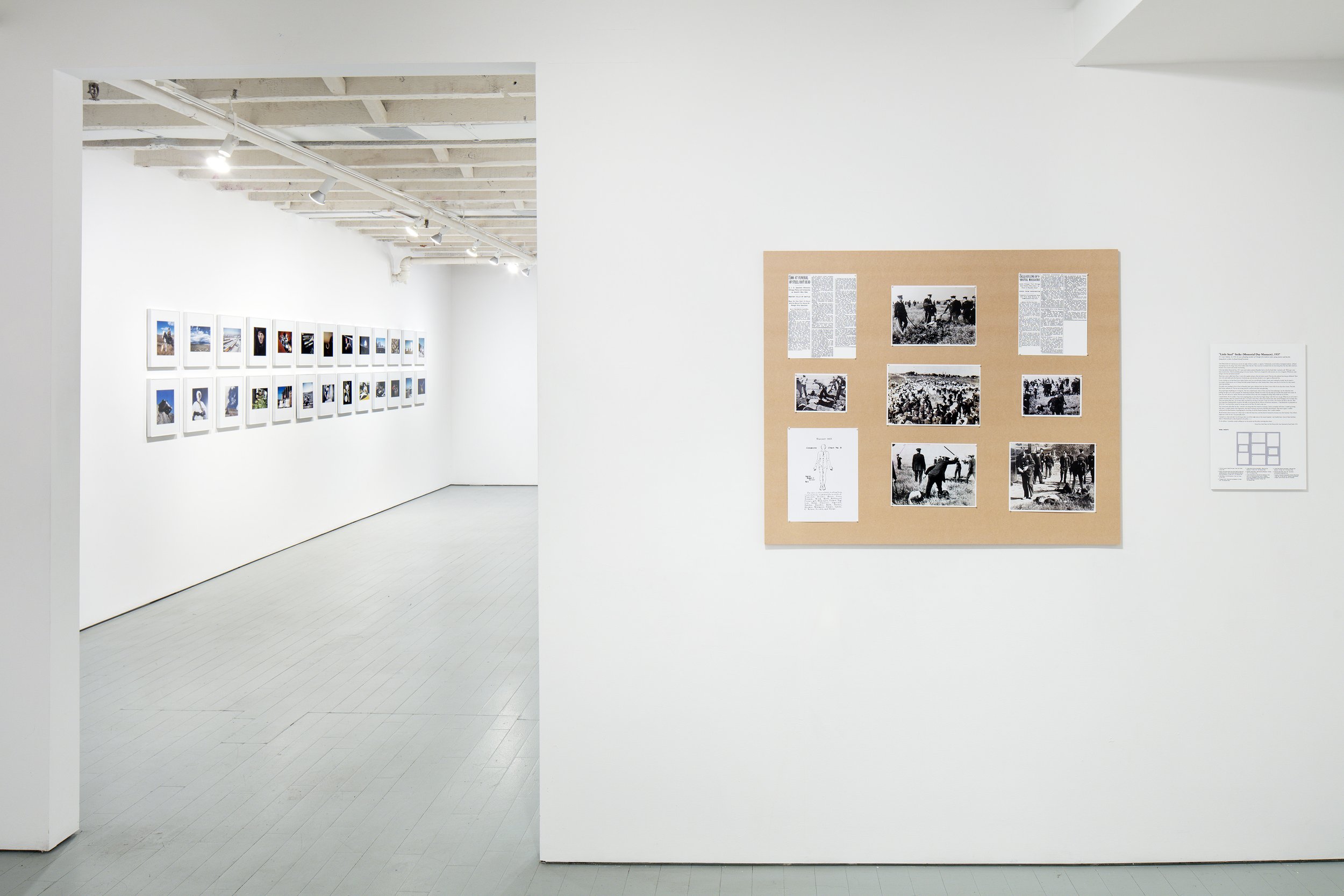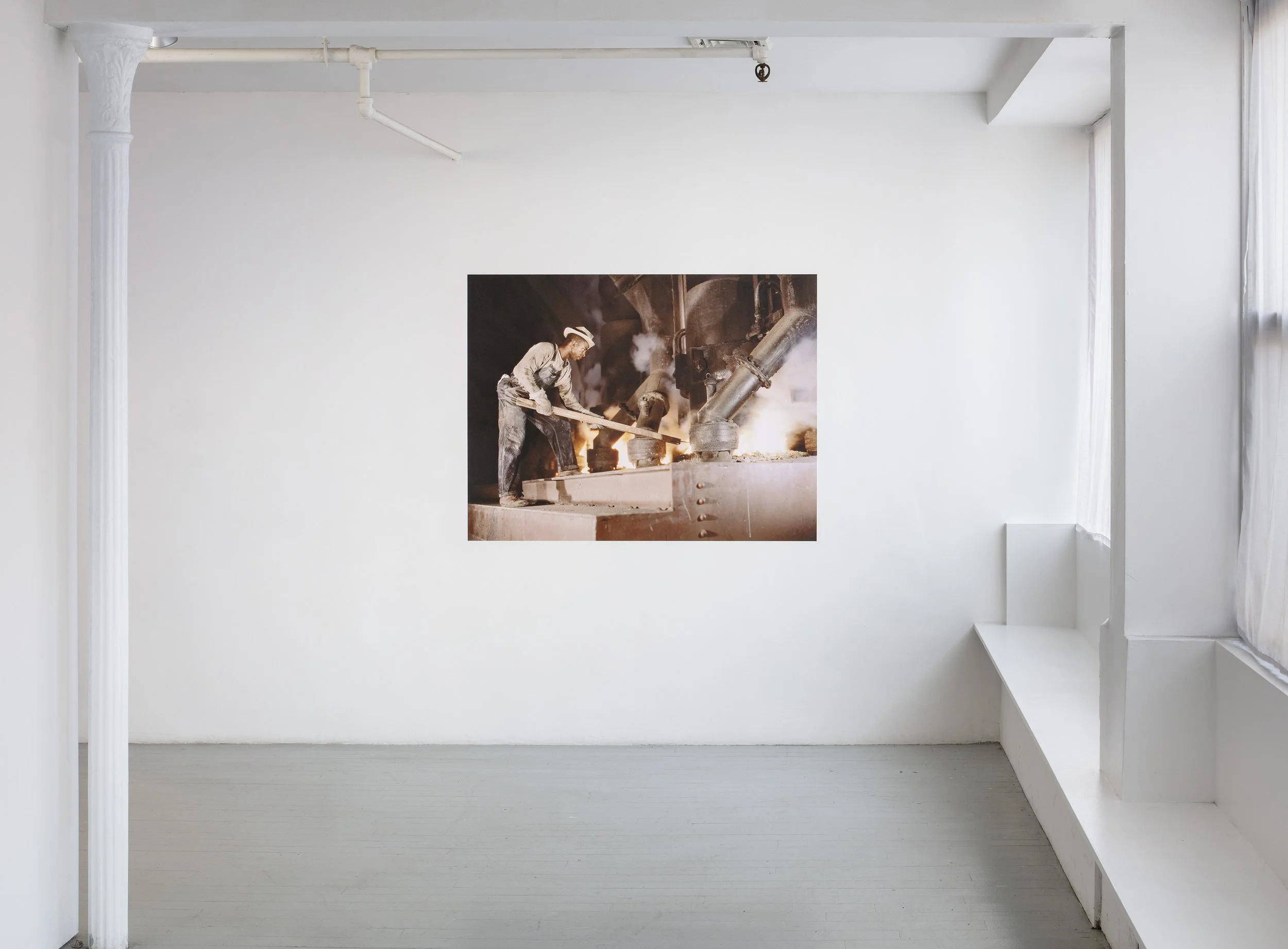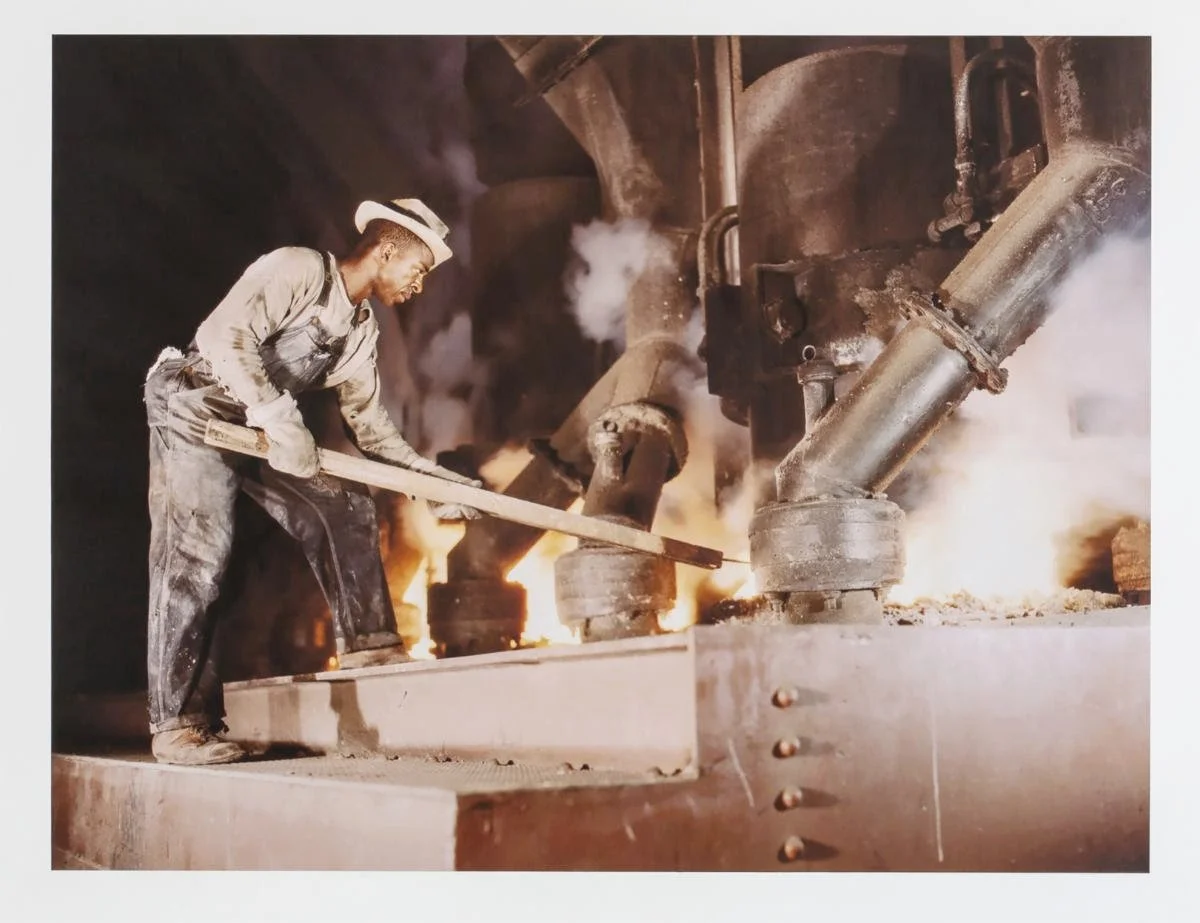Color Photographs from the New Deal (1939-1943)
February 8- April 21, 2024
For the first exhibition following Carriage Trade's 15th anniversary, we are pleased to re-present Color Photographs from the New Deal, originally exhibited at 62 Walker Street in 2012. Including many new selections of color photographs from the Library of Congress archive, the show will also incorporate documentation of labor movements (the Southern Tenant Farmers Union and the Chinese Hand Laundry Alliance in NYC, among others), as well as strikes and protests from the 1930's and 40's which collectively identify the significance of extragovernmental popular movements in helping shape the progressive economic reforms of the New Deal period. The original show text is below:
Largely forgotten until the mid-seventies when they resurfaced in the Library of Congress archives, the color photographs of the Farm Security Administration/ Office of War Information (1939-1943) document the later period of FDR’s New Deal, an ambitious series of government programs designed to address the brutal effects of the Great Depression on the social and economic fabric of 1930’s America. While the Library’s archive of black and white depression-era photographs is more familiar and more often reproduced, the color images, taken within three years of the invention of Kodachrome film, are striking for their rich, saturated colors and rigorously formal compositions.
The images document industrial and agricultural labor, rural and small town life, as well as large-scale mobilization for the war effort in the early forties, and were intended as a kind of inspirational portrait of Americana in the face economic troubles and the growing wartime fears of “Hitler at our doorstep.” In response to accusations that the New Deal programs were too extreme in their reshaping of economic and social policy, Roy Stryker, who was behind both black and white and color photography projects, encouraged the photographers to provide supporting evidence for the necessity and purpose of government’s role in ensuring the public’s welfare after the near collapse of the country’s financial system. While occasional charges of “socialism” and “communism” were levied against the New Deal, the goal of the myriad government programs that comprised it was in fact to restore capitalism after the speculative excesses that led to the crash of 1929.
The emphasis on both technical and formal invention in these images underscores the promise of technology and order in the face of the social and economic instability of the period. Seemingly borrowing from the formal and compositional experimentation of social realist propaganda, the earnestness and belief encoded in these pictures is hard to miss, while at the same time their aesthetic sophistication belies a professionalism that suggests a great respect for their intended audience.
Because the role of the FSA/OWI pictures was to encourage support for solutions rather than reveal the tensions in the social fabric which made the need for reforms obvious, what is rarely in evidence in the FSA/OWI archive are images of social unrest that was endemic to the 1930’s. In an effort to offer a broader context for the FSA/OWI photographs, they will be exhibited with archival material that documents the major strikes and protests of the time, some of which were met with shows of force by the state. Revealing the pressure on the Roosevelt administration to respond to the desperate circumstances of large segments of the population who had lost faith in “the system,” this documentation finds many parallels in the spreading social instability that has come in the wake of more recent economic crises around the world.
Carriage trade would like to express its gratitude to Betty Yu as well as gallery assistants Isabel Cunningham, Anna Leon, Laura Li, Faith Piñon, Yanzhen Shi, and Astrid Schneider for their invaluable efforts on this exhibition. Special thanks to the Lower Manhattan Cultural Council (LMCC), New York State Council on the Arts (NYSCA), Laurence B. Benenson and Mr. Jacques Louis Vidal for their generous support.
Image: Jack Delano, Packing oranges at a co-op orange packing plant, Redlands, Calif. Santa Fe R.R. trip, 1943 , Courtesy of Library of Congress.
Installation View
Color Photographs from the New Deal (1939-1943), Installation View, Carriage Trade, Photo: Nicholas Knight
Installation View
Color Photographs from the New Deal (1939-1943), Installation View, Carriage Trade, Photo: Nicholas Knight
Installation View
Color Photographs from the New Deal (1939-1943), Installation View, Carriage Trade, Photo: Nicholas Knight
Installation View
Color Photographs from the New Deal (1939-1943), Installation View, Carriage Trade, Photo: Nicholas Knight
Installation View
Color Photographs from the New Deal (1939-1943), Installation View, Carriage Trade, Photo: Nicholas Knight
Jack Delano
On the Ferris wheel at the Vermont State Fair, Rutland, 1941, Inkjet print, Courtesy of Library of Congress.
Russell Lee
Photograph shows mountain pass with Million Dollar Highway (U.S. 550) and town below., Ouray, Colorado, 1940, Inkjet print, Courtesy of Library of Congress.
Jack Delano
Man in a sugar-cane field during harvest, vicinity of Rio Piedras, Puerto Rico, 1941, Inkjet print, Courtesy of Library of Congress.
Russell Lee
Faro and Doris Caudill, homesteaders, Pie Town, New Mexico, 1940, Inkjet print, Courtesy of Library of Congress.
Russell Lee
Hay stack and automobile of peach pickers, Delta County, Colorado, 1940, Inkjet print, Courtesy of Library of Congress.
Russell Lee
Grain elevators, Caldwell, Idaho, 1941, Inkjet print, Courtesy of Library of Congress.
Russell Lee
Exhibit of crops and vegetables at the Pie Town, New Mexico Fair, 1940, Inkjet print, Courtesy of Library of Congress.
Arthur Rothstein
Boys sitting on truck parked at the FSA ... labor camp, Robstown, Tex., 1942, Inkjet print, Courtesy of Library of Congress.
Russell Lee
The Faro Caudill [family] eating dinner in their dugout, Pie Town, New Mexico, 1940, Inkjet print, Courtesy of Library of Congress.
Marion Wolcott
Cutting Burley tobacco and putting it on sticks to wilt before taking it into the curing and drying barn on the Russell Spears’ farm, vicinity of Lexington, Ky., 1940, Inkjet print, Courtesy of Library of Congress.
Alfred T. Palmer
Tightening a nut on a guide vane operating seromotor in TVA’s hydroelectric pnt, Watts Bar Dam, Tennessee. Located 530 miles above the mouth of the Tennessee River, the dam has an authorized power installation of 90,000 kw., which can be increased to a possible ultimate of 150,000 kw. The reservoir at the dam adds 370,000 acre-feet of water to controlled storage on the Tennessee River system, 1942, Inkjet print, Courtesy of Library of Congress.
Jack Delano
Indiana Harbor Belt RR, switchman demonstrating signal with a “fusee” - used at twilight and dawn - when visibility is poor. This signal means “stop.” Calumet City, Ill., 1943, Inkjet print, Courtesy of Library of Congress.
Alfred T. Palmer
Operating a hand drill at Vultee-Nashville, woman is working on a “Vengeance” dive bomber, Tennessee, 1943, Inkjet print, Courtesy of Library of Congress.
Jack Delano
General view of part of the South Water street Illinois Central Railroad freight terminal, Chicago, Ill., 1943, Inkjet print, Courtesy of Library of Congress.
Alfred T. Palmer
Riveting team working on the cockpit shell of a B-25 [i.e. C-47] bomber at the plant of North American Aviation, Inc., Inglewood [i.e. Douglas Aircraft Company, Long Beach], Calif., 1942, Inkjet print, Courtesy of Library of Congress.
Photographer unknown
Woman putting on her lipstick in a park with Union Station behind her, Washington, D.C., 1943, Inkjet print, Courtesy of Library of Congress.
Jack Delano
Commuters, who have just come off the train, waiting for the bus to go home, Lowell, Mass, 1941, Inkjet print, Courtesy of Library of Congress.
Installation View
Color Photographs from the New Deal (1939-1943), Installation View, Carriage Trade, Photo: Nicholas Knight
Installation View
Color Photographs from the New Deal (1939-1943), Installation View, Carriage Trade, Photo: Nicholas Knight
Installation View
Color Photographs from the New Deal (1939-1943), Installation View, Carriage Trade, Photo: Nicholas Knight
Installation View
Color Photographs from the New Deal (1939-1943), Installation View, Carriage Trade, Photo: Nicholas Knight
Installation View
Color Photographs from the New Deal (1939-1943), Installation View, Carriage Trade, Photo: Nicholas Knight
Installation View
Color Photographs from the New Deal (1939-1943), Installation View, Carriage Trade, Photo: Nicholas Knight
Detail View
Southern Tenant Farmers Union, Left; Dorothea Lange Evicted Arkansas sharecropper, One of the more active of the union members (Southern Tenant Farmers Union). Now building his new home at Hill House, Mississippi, 1936,Courtesy of Library of Congress. Right; Naomi Mitchinson Coming in to Memphis, Roll the Union On, H. L. Mitchell, pg. 89, Photo: Nicholas Knight
Installation View
Color Photographs from the New Deal (1939-1943), Installation View, Carriage Trade, Photo: Nicholas Knight
Installation View
Color Photographs from the New Deal (1939-1943), Installation View, Carriage Trade, Photo: Nicholas Knight
Installation View
Color Photographs from the New Deal (1939-1943), Installation View, Carriage Trade, Photo: Nicholas Knight
Installation View
Color Photographs from the New Deal (1939-1943), Installation View, Carriage Trade, Photo: Nicholas Knight


